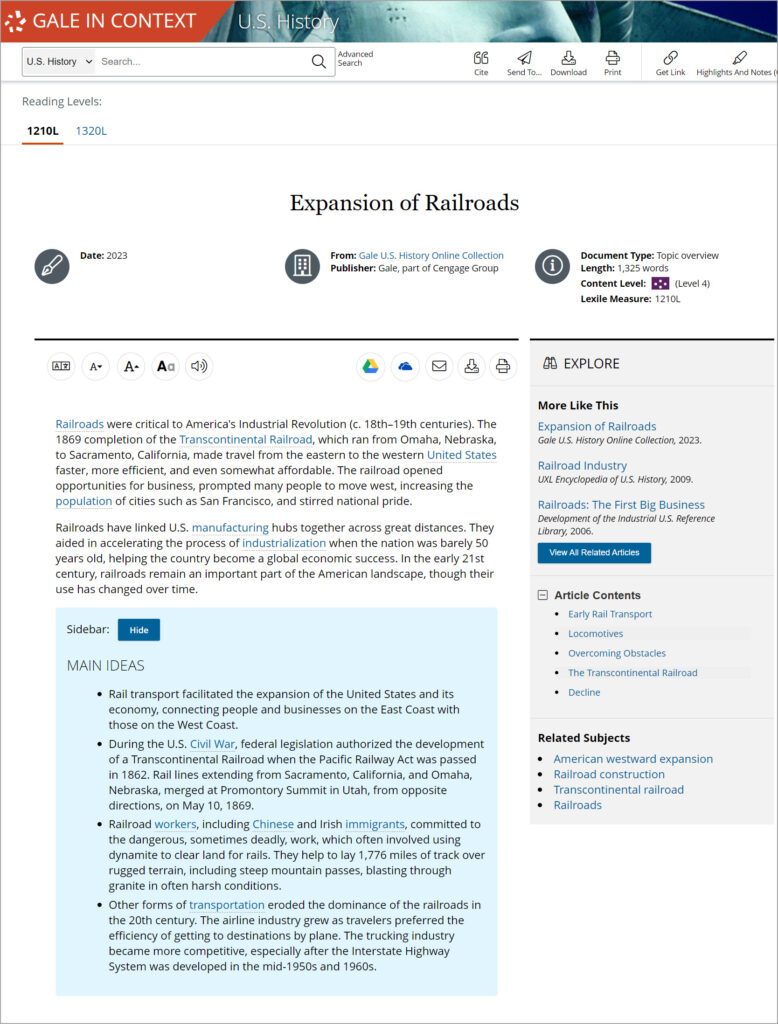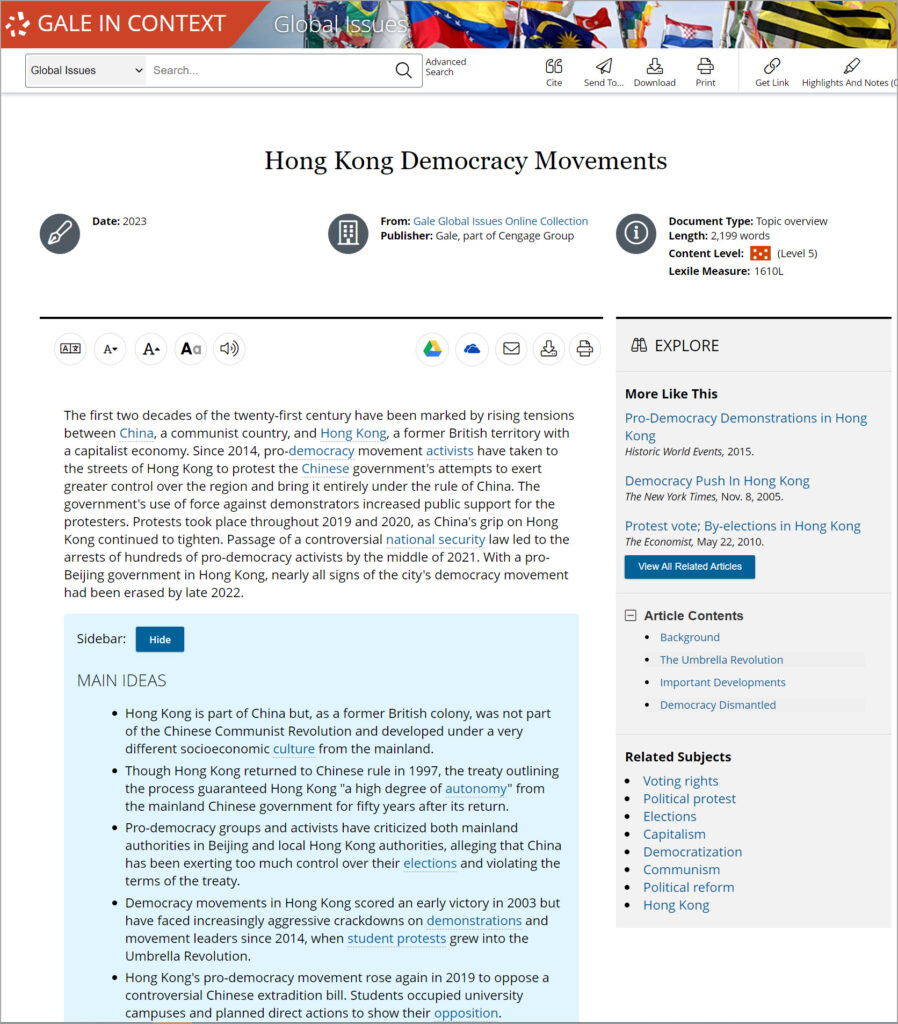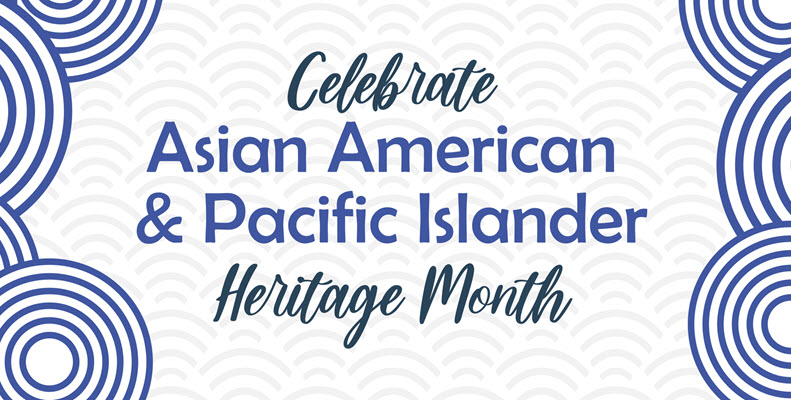| By Gale Staff |
May is Asian American and Pacific Islander (AAPI) Heritage Month, a chance to recognize these peoples’ stories and contributions. Gale In Context databases can assist teachers in giving a voice to these narratives, providing unbiased, well-organized, and multidimensional content to explore. Teachers can discover strategies to integrate AAPI Heritage Month into any topic, from geography and history to current events and media.
Today, more than 20 million U.S. citizens identify as either Asian American or Pacific Islander. In 1976, this number was just over 1 million. Nonetheless, it was Jeanie Jew, a young staff member on Capitol Hill, that advocated for official acknowledgment of the contributions of AAPI people that year. She is largely credited with sparking the movement to create the observation after noticing a lack of recognition for Asian Pacific Americans during the U.S. Bicentennial celebrations. What was originally just a week-long celebration was eventually extended to a full month in 1990 when former president George H.W. Bush proclaimed May as Asian American and Pacific Islander Heritage Month.
Investigate Historical Contributions
Dive into the past with Gale In Context: U.S. History. This database features helpful academic summaries, news articles, and primary sources covering people and events from the Revolutionary War to pressing conflicts in the 21st century. From feats of industry, science, and advocacy, Asian Pacific Americans have played an active role.
The Transcontinental Railroad
One of the first major waves of immigration to the United States from Asian countries was during the 1850s. Spurred by the Gold Rush, 25,000 Chinese miners moved to the United States. Many of these individuals, facing language barriers and discrimination, took dangerous jobs expanding the U.S. railway system. The Transcontinental Railroad was completed in May of 1869, marking a vital piece of the American Industrial Revolution. Running from Nebraska to California, the railroad allowed Americans the ability to quickly and affordably travel west, an opportunity that changed the country’s economy and identity forever.

Atomic Science
Chinese-born Chien-Shiung Wu was of the most notable scientists in U.S. history, but many have never heard her name. She moved to the United States to pursue graduate studies in physics. By her early 30s, she received a teaching position at Princeton University. And in 1944, she joined the Manhattan Project team at Columbia University. Famously, that team’s endeavors led to the weapon that ended World War II. In the 1950s, she began research alongside Tsung Dao Lee, Ph.D., and Chen Ning Yang, Ph.D. Their work on nuclear decay earned a Nobel Prize, yet Wu, undoubtedly because of her gender, was not included in the award. Regardless, she is a role model for women in STEM and a feminist icon.
Civil Rights
Yuri Kochiyama was born in California in 1921. The attack on Pearl Harbor occurred when she was just 20 years old, and as a Japanese American, she and her family were moved to an internment camp. Her early exposure to racial injustice led her to become a significant, somewhat controversial human rights activist. In 1946, she moved to New York City and was soon involved in the Civil Rights Movement. She even befriended Malcolm X and was famously photographed at the scene following his assassination. Her often extreme ideas helped fuel the pursuit of justice in the United States.
Study Modern-Day Cultural Topics
Asian Americans and Pacific Islanders are prominent in modern-day culture and global conversations. Gale In Context: Global Issues helps compile information from around the world, including primary sources, multimedia content, and general data. There are even user-friendly topic pages for 250 counties. Whether discussing Hong Kong’s democratic movement, the TikTok controversy, or the latest news from BTS, your students can find meaningful content updated daily.

Chinese Factories
Despite the ongoing political conflict, the United States trades heavily with Asian markets. In 2022, China, specifically, exported more than $500 billion in goods to the United States. However, in recent years, many activists, both inside and outside of China, challenged the ethics of Chinese labor laws and factory conditions. The pandemic exacerbated these concerns, with many protests leading to violence. Despite their advocacy against climate change and for social justice, young Americans still make significant purchases from companies that rely heavily on the affordability of Chinese factories. It is an ongoing dilemma, and the evolving economic relationship between the United States and China will likely serve as one of the defining global conversations for Generation Z.
AAPI Discrimination
An alarming increase in anti-Asian crimes was reported during the pandemic, including acts of discrimination, verbal harassment, and even physical assault. Much of the crime was motivated by online misinformation against AAPI people. In response, state leaders in California invested in anti-hate organizations and support for victims. Businesses launched their own awareness campaigns, and cities all over the country brought renewed enthusiasm for AAPI Month. Play a role in combatting AAPI hate by raising awareness for Asian American culture in your classroom and dispelling falsehoods.
Generate Memorable Lesson Plans
Not sure where to start? Gale In Context: For Educators is a database for teacher-specific tips and tools. We’ve accumulated professional development materials, including webinars and tutorials, covering topics like diversity, equity, and inclusion and improved accessibility in the classroom. Gale In Context: For Educators even features lesson plans, making your job a little easier.
Each month, Gale curates a user-friendly collection of content-specific training materials. This is your one-stop shop for content and ideas related to different holidays and observances. For AAPI Heritage Month, we launched a suite of engaging, creative activities, including a Jeopardy game and country-specific trading cards. Find these and so much more through Gale’s support site.
aapi-trading-cardsIf your school isn’t a current Gale subscriber, contact your local Gale rep to learn more. In the meantime, check out the official Asian American and Pacific Islander Heritage Month page for even more classroom activity ideas!

